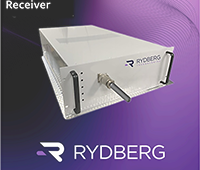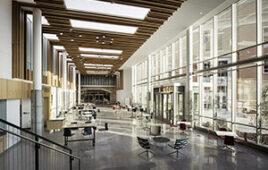Researchers are investigating noise generated by wind farms. Photo: Steve Ford Elliott |
Univ. of Adelaide acoustics researchers are
investigating the causes of wind turbine noise with the aim of making them
quieter and solving ‘wind turbine syndrome’.
They
are also developing a computer model to predict the noise output from wind farms
so they can accurately and quickly assess the effectiveness of potential
noise-reducing designs and control methods.
Research
leader Dr Con Doolan, of
the Univ.’s School
of Mechanical Engineering, said the noise generated from wind
turbines is ‘trailing edge or airfoil noise’, the same sort of noise generated
at the edge of aircraft wings.
“We
know generally what causes that noise—as the turbulent air flows over the sharp
edge of the blade it radiates sound much more efficiently, so the noise can be
heard at some distance,” said Dr Doolan.
“What
we don’t yet understand, however, is exactly how that turbulence and blade
edge, or boundary layer, interact and how that makes the noise louder.
“If
we can understand this fundamental science, we can then look at ways of
controlling the noise, through changing the shape of the rotor blades or using
active control devices at the blade edges to disrupt the pattern of turbulence
and so reduce the noise.”
Dr
Doolan said further complicating factors came from the effects of multiple wind
turbines together and the way the noise increases and decreases as the blades
rotate—the blade ‘swish’. The model they are developing will look at the noise
from the whole wind turbine and how multiple numbers of wind turbines together,
as in a wind farm, generate noise.
“Wind
turbine noise is very directional. Someone living at the base might not have a
problem but two kilometers away, it might be keeping them awake at night,”
he said.
“Likewise
this broadband ‘hissing’ noise modulates up and down as the blades rotate and
we think that’s what makes it so annoying,” he said.
“Wind turbine noise is controversial but there’s
no doubt that there is noise and that it seems to be more annoying than other
types of noise at the same level. Finding ways of controlling and reducing this
noise will help us make the most of this very effective means of generating
large amounts of electricity with next to zero carbon emissions.”





